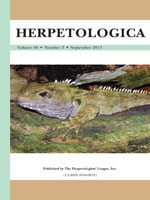The New World direct-developing frogs (Terrarana) comprise more than 970 species distributed from the southern United States to northern Argentina. Although the composition of this clade has been remarkably stable for many decades, evidence for its monophyly is derived mostly from DNA sequences with putative phenotypic synapomorphies limited to the occurrence of direct development, an embryonic egg tooth (known in few species), and T-shaped terminal phalanges. Based on a survey of the urogenital and vascular systems and the submandibular musculature of hyloid frogs, we report 16 characters that provide putative synapomorphies at a variety of hierarchic levels. Most significantly, they include seven putative synapomorphies for Terrarana that can be observed through simple dissections, including (1) fusion of the Wolffian ducts, resulting in a single, common cloacal opening; (2) Wolffian duct fusion located anteriorly with a single, common duct along the posterior, > 1/3 of the distance between caudal edge of kidneys and cloacal wall; (3) presence of the posterior dorsolumbar vein; (4) absence of the medial dorsolumbar vein; (5) origin of the posterior caval vein in the anterior 1/3 of the kidneys; (6) posterior origin of dorsolumbar arteries; and (7) presence of the pelvic lymphatic septum.
How to translate text using browser tools
1 September 2013
New Morphological Synapomorphies for the New World Direct-Developing Frogs (Amphibia: Anura: Terrarana)
Carlos Taboada,
Taran Grant,
John D. Lynch,
Julián Faivovich
ACCESS THE FULL ARTICLE

Herpetologica
Vol. 69 • No. 3
September 2013
Vol. 69 • No. 3
September 2013
Submandibular musculature
systematics
Urogenital system
vascular system





